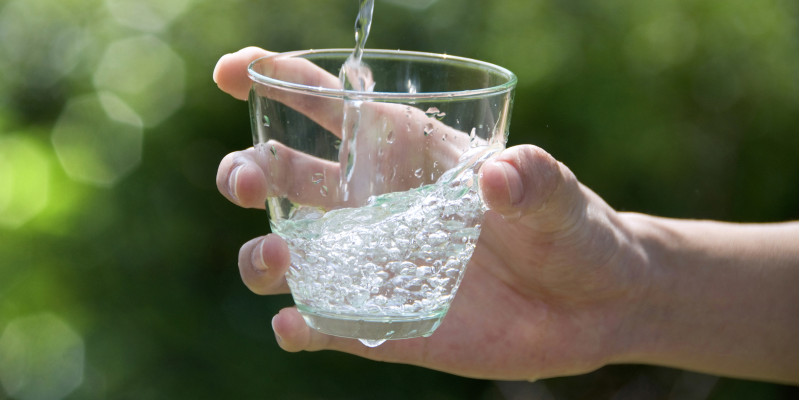Maria Krautzberger, President of UBA, said: "Drinking water in Germany can be drunk without any reservations. Larger waterworks in particular guarantee a supply of excellent quality water. Unlike like bottled water, drinking water is subject to frequent checks, sometimes daily. Water from the tap is also less expensive: a two-person household in Germany pays an average of 27 cents per person and day for a daily consumption of 121 litres of drinking water. A single litre of mineral water generally costs quite a bit more.“
In its current report covering the years 2011-2013, the UBA has published the results of tests from all the large waterworks in the country, which supply about 90 percent of the population.
As concerns nitrate, which fertiliser and slurry introduce to groundwater, the newest data confirms the downward trend observed earlier. Whereas 1.1 percent of monitored samples still exceeded the limit value in 1999, that figure has dropped to virtually 0% since 2009. The data on nitrate content in drinking water does not, however, allow any inference about nitrate in groundwater or other bodies of water. Nitrate concentrations elsewhere often continue to rise because of fertilisation application in agriculture. Drinking water itself is unpolluted nearly everywhere: only one part per thousand of the drinking water samples from Germany's larger waterworks exceeds the limit value of 50 milligrams nitrate/litre. The waterworks themselves ensure compliance with this limit value. Some operators dilute slightly contaminated groundwater with unpolluted water and thus assure drinking water quality. UBA's President Maria Krautzberger assigns responsibility with respect to nitrate to the agricultural sector: "We must improve protection of our groundwater, and that requires first and foremost a reduction of nitrate inputs from agriculture. A growing number of water suppliers are concerned that there may soon not be enough unpolluted groundwater in their region for drinking water production. They would then have to take steps to extract the nitrate from the groundwater by technical means or draw on resources farther away. In the worst case, that could add one euro per cubic metre of water (1,000 litres) to consumer water bills. A two-person household living in a 80-m2 dwelling would then jump from paying a current average of 95 euros per year to about 140 euros."
Exceedences of the limit value for the toxic heavy metal lead occur only rarely nowadays (less than 0.1% of samples). Nature or the waterworks are never to blame but rather lead pipes or fixtures in buildings or dwellings. Older systems are often the reason for too much copper, nickel and cadmium in water. The only remedy is to install certified pipes. A limit value for lead of 10 micrograms per litre of drinking water has been in effect since 1 December 2013, and waterworks operators are required to issue public information if their network still contains lead – even if their water complies with the limit value.
The European Drinking Water Directive requires the Member States to publish the abovementioned drinking water quality reports every three years. This applies to about 2,460 water supply regions in Germany (including the linked distribution system and household drinking water systems) which deliver more than an average 1,000 cubic metres of water per day or serve more than 5,000 people.
The European Drinking Water Directive regulates the quality standards for monitoring 26 chemical and two microbiological parameters which are used to assess the health aspects of drinking water. Drinking water may also contain other chemicals, perhaps of natural origin as with fluoride from the bedrock underneath, or due to human activities which introduce artificial sweeteners, complexing agents from dishwasher detergents or flame retardants. These are all rare cases or occur in very low concentrations (less than one millionth gram per litre). The UBA therefore sees no benefit in continuous, widespread testing of Germany's drinking water for traces of many other chemicals. A more efficient approach would be to determine whether the rare and regional differences in the incidence of individual chemicals poses a health risk and warrants permanent monitoring. The Federal Environment Agency provides information and advice to local public health authorities, water suppliers and the public.
Local water suppliers also provide information about drinking water quality – often with daily updates on the Internet.
 Click to enlarge
Click to enlarge
